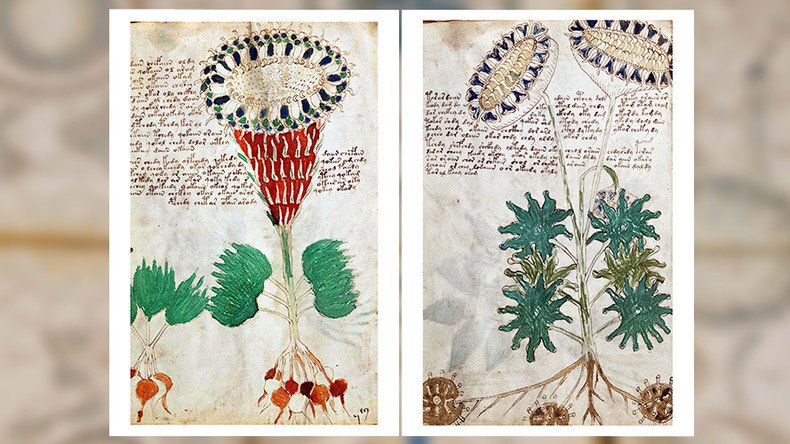Cryptic Voynich manuscript may actually be guide for medieval women’s health

A mysterious codex written in an indecipherable cipher may be a medieval women’s health manual, according to the latest theory. Historian Nicholas Gibbs proposed the solution, based on images contained in the elusive Voynich manuscript.
"One of the more notable aspects of the manuscript were the illustrations on a bathing theme, so it seemed logical to have a look at the bathing practices of the medieval period,” Gibbs said in The Times Literary Supplement (TLS).
“It became fairly obvious very early on that I had entered the realms of medieval medicine," he added.
A clearer image of the new Voynich transcription sample, in case anyone interested. Any brave souls want to translate? pic.twitter.com/1lqf5C3Rwp
— Barnaby Taylor (@miserabiliter) September 8, 2017
Gibbs explored the idea in his research, finding that “one of its chief characteristics is the presence of naked female figures immersed in some concoction or other.”
The historian also cites recipes for bathing solutions and gynecology-related medicine in the manuscript as further evidence in support of his theory.
The lack of a single plant name or malady in the Voynich manuscript is explained by Gibbs as an alleged missing index. “For the sake of brevity, the name of both plant and malaise were superfluous in the text so long as they could be found in the indexes matched with a page number,” he said.
Housed at Yale University since 1969, the manuscript gets its name from Wilfrid Voynich, a bibliophile who acquired the book in 1912. Slightly larger than a modern day paperback, the manuscript contains astrological charts, strange plants, ladies bathing and a script that experts have, as yet, failed to fully comprehend.
Exact reproductions approved of mysterious ‘unbreakable’ coded Voynich Manuscript (PHOTOS) https://t.co/csb4KxMPnTpic.twitter.com/phkkGsTwdx
— RT (@RT_com) August 21, 2016
Previous theories on mystery code include that it is vowelless Ukrainian, abbreviated Latin or a Flemish-based creole. All theories have failed under scrutiny.
The latest theory has also been treated with scepticism, however. “Frankly I’m a little surprised the TLS published it,” Lisa Fagin Davis, executive director of the Medieval Academy of America, told The Atlantic.
And here we go again. I've reviewed dozens of "solutions," and this one is just as unconvincing as the last 3,000. https://t.co/XGWqs2FoDc
— Lisa Fagin Davis (@lisafdavis) September 8, 2017
Davis challenged Gibbs to elaborate on his theory that an index is missing. “This is the piece that really killed it for me,” she said of a supposed missing index. If Gibbs produced greater detail on this theory, she would be open to taking it seriously.












